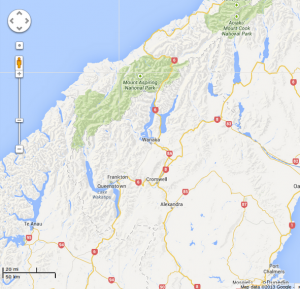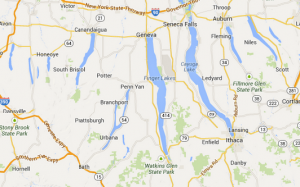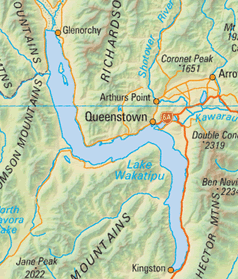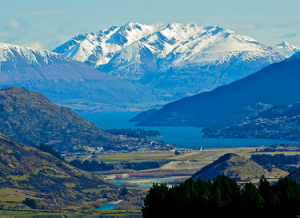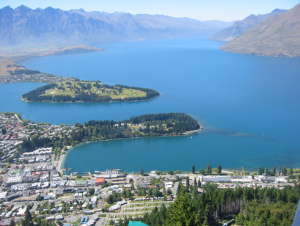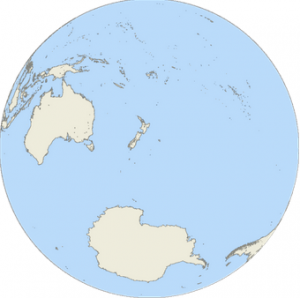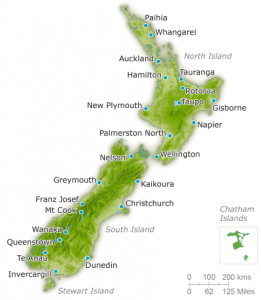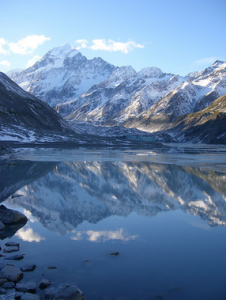My Kiwi friends live in Queenstown, in the Otago Region of New Zealand’s South Island. While using google maps to get oriented to the vicinity, I ran across this view.
Something looked strangely familiar. The chain of long skinny lakes on the map were formed by glaciers just like the Finger Lakes in Western New York.
Queenstown is located on the shores of Lake Wakatipu in the southern part of the chain. The lake is shaped like a stylized lightening bolt, a reversed “N” shape. From the Dart River flowing into the northern end, the lake runs south for 30 kilometres (19 mi) before turning abruptly to the east. Twenty kilometres (12.4 mi) further along it turns sharply to the south, reaching its southern end 30 kilometres (19 mi) further south. Compared to Seneca Lake it’s a bit longer (50 vs. 38 mi.) and more than half again as large in terms of surface area (112 vs. 67 sq.mi.).
Lake Wakatipu is deep, with a maximum depth of 380 metres (1,250 ft). It’s at an altitude of 310 metres (1,020 ft), which locates the bottom of the lake below sea level, as is the case with Seneca and Cayuga Lakes here in NY. While our Finger Lakes are surrounded by rolling hills, though, Lake Wakatipu and the other NZ finger lakes are surrounded by snow capped mountains.
Queenstown is located near the second bend of Lake Wakatipu, where it turns south. The Remarkables mountain range, lying along the southeastern edge of the lake, is a popular venue for adventure tourism, with skifields, paragliding, bungy jumping and tramping tracks within easy reach.
It is here that the fun will begin in early February. Next up: units, or how to convert liters/100km to miles/gallon

